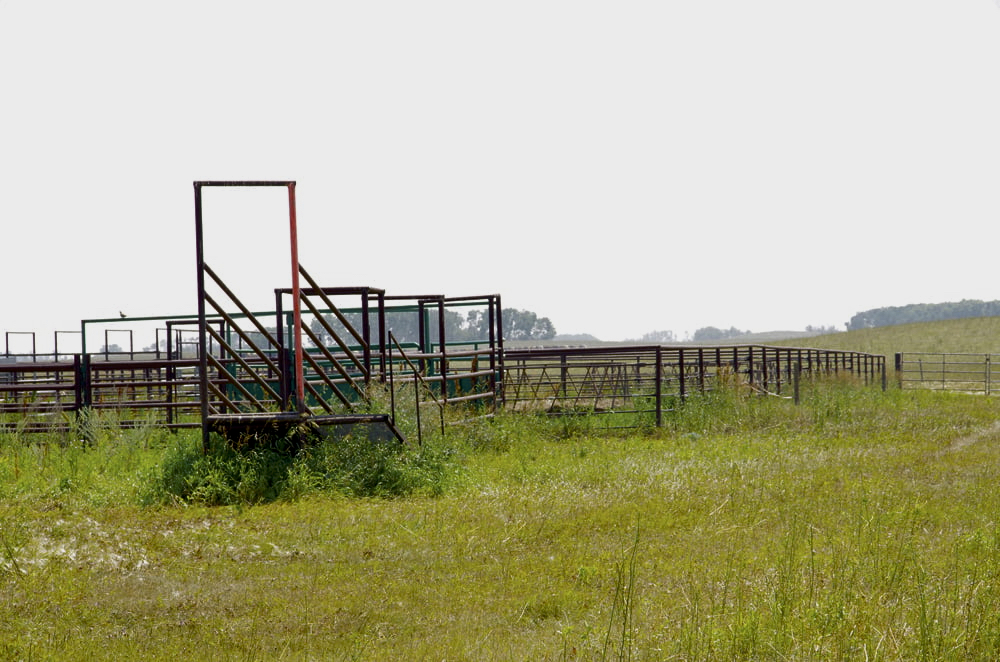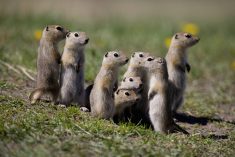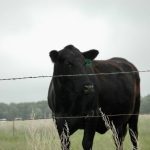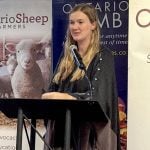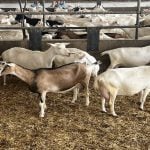Though Ryan Canart grew up in Kamloops, B.C., he has always had roots in Manitoba.
He spent much of his time as a kid with cattle in sales barns with his brother and his father, who worked as an order buyer but was originally from Elkhorn, Man. He was comfortable around cattle at a young age and learned the ins and outs of the industry from his father.
That’s why, during university, Canart found himself leaving the mild weather and gently rolling hills of Kamloops for the cold, flat prairies of Virden, Man., with his brother.
Read Also
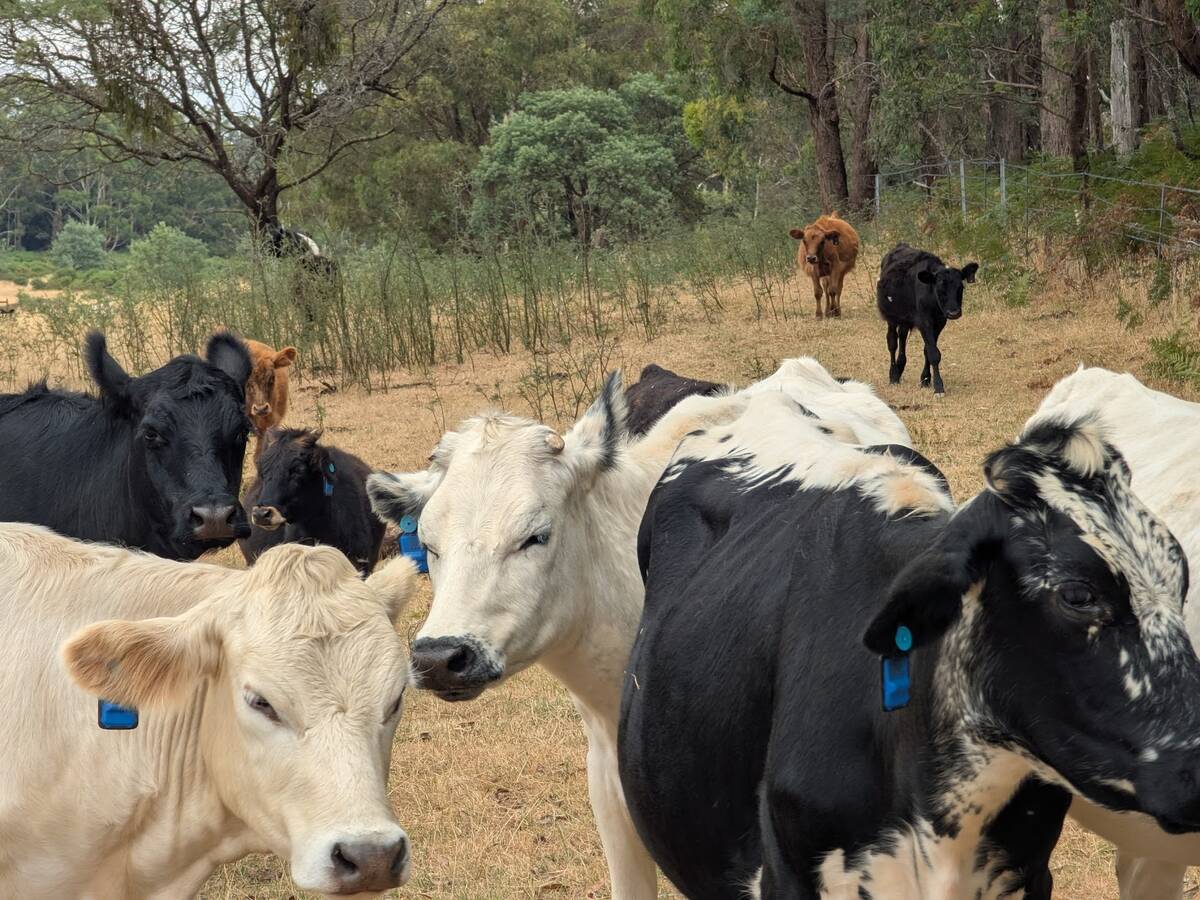
Australian company brings ear-tag tech to Canadian pastures
With Smart Paddock, beef farmers and ranchers can track their cattle through GPS technology
“Some land came up for sale here with family ties,” Canart says.
While they were still in university, Canart and his brother would travel back and forth to Manitoba to sow grass, put in water lines and fences, and ensure the operation was ready. Then, after graduating, Canart moved to Manitoba permanently.
“In 2002 I graduated university with a natural resource management degree and came out here and had grandiose ideas of setting up an agroforestry silvopasture operation,” Canart says with a laugh. “And so we’ve been operating it for about 24 years now.”
Yearling operation
All of the animals on Canart’s operation are yearlings. He purchases them in the spring and sells them in the fall. Often, Canart only has cattle on his land for 110 days of the year.
“That’s kind of the business model that Dad had been in up in Kamloops,” he says. “And actually both my brother and I had visions of just setting up an operation and not staying here. So, it wasn’t ever kind of like a traditional cow-calf operation. I had never been exposed to that. Dad hadn’t really, either.”
There are positives to running a yearling operation, Canart says. One for him is being done in 110 days and not having to deal as much with winter conditions, whereas cow-calf producers must deal with the environment year-round and brave Canadian winters.
There are also negatives, however. Canart is “at the mercy” of the yearling market, and he’s not on the other side of selling or buying.
He says there are effects on the environment, as well. Running between 900 to 1,000 yearlings every summer can be hard on the land.
“I lose out on the opportunity to get all the benefits of swath and bale grazing. I don’t get the chance to improve the soil in that respect.”
Despite this, Canart is doing what he can to improve his soil.
Rotational grazing
While presenting at the University of Manitoba’s Sustainability of Canadian Agriculture Conference, Canart emphasizes his passion for rotational grazing.
“I really want to use the cow as a tool to increase my ecological resiliency and buffer against the extreme weather,” he says during his presentation.
Canart’s pastures are broken up into small paddocks, and he aims to move his cattle daily, timed around the high point of the sun.
“That’s when the sugars in the plants are the highest. And so, you’re trying to mimic the bison’s activity but also harvest the highest-quality forage and put weight on cattle as best you can.”
Because his herd is so large, Canart usually divides the yearlings into three or four groups.
He has extensive piping on his land to bring water to all his different paddocks. Each paddock contains water bowls. This is another reason why Canart splits his herd up into groups — too many cattle in a paddock strain the watering system.
“The major constraint there is standing water supply,” Canart says in an interview. “A 1,000-gallon trough doesn’t really last long when 400 head walk up to it.”
When he’s tried to run bigger groups, he had headaches such as wrecked troughs and cattle standing around, bawling.
When Canart first started rotational grazing, he rested his paddocks for around 30 days. Now he rests them for 50 to 60 days and sees a benefit from the increased amount of time. He also doesn’t allow his cattle to graze the grass all the way down and instead leaves a lot to increase soil organic matter.
“Both of my grandfathers would lose their minds if they saw how much grass that we leave on the landscape nowadays. I grew up in Kamloops outside the influence of the agricultural system in Manitoba. So, I came into it as kind of a disruptive force. I hadn’t come up under my father, my grandfather in that respect. So, I learned about grazing from a textbook, and that’s kind of maybe been a good thing.”
He says he has seen benefits to his land from rotational grazing, such as increasing the soil’s ability to withstand drought.
“I think it’s becoming more and more well established that proper rotational grazing can reduce emissions, or (add) more carbon on the landscape than other forms of grazing.”
Day job
Rotational grazing isn’t the only thing helping Canart improve the land on his operation. His day job as the conservation district manager at Upper Assiniboine River Conservation District has allowed him to learn a lot about soil health and ecology, as well.
“I’ve been able to go to conference after conference because I am trying to pick up ideas for work. But I can also implement concepts at home.”
In his role with the conservation district, Canart promotes a healthy and sustainable landscape. This allows him to think about sustainability and water on his operation, as well as to speak to other farmers and ranchers in his area about issues that concern them.
At the conference, while presenting on the different programs offered through the conservation district, Canart spoke about the intersection of his job with the work he does on his ranch. One program through the conservation district currently supports rotational grazing infrastructure, something close to Canart’s heart.
“The goal of this program, again, is to reduce emissions and increase carbon storage. And I believe that this high-performance grazing does both. But again, I’m a little biased. I’m a cattle guy.”
With a full-time job and an operation that is very active from the spring to the fall, Canart says it isn’t always easy to manage everything he does.
“My hair’s on fire until August,” he says with a laugh.
However, the chaos of that time is something he wouldn’t change for anything. And, as a rancher, Canart emphasizes his passion for keeping as much of the land in grassland as possible.
“I think people need to realize that those cattle are protecting the native areas.”


